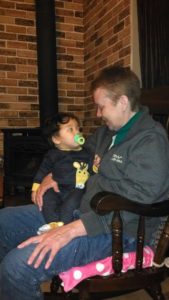It’s something we all should have ready, even without a terminal diagnosis, but once you have a terminal diagnosis, it is crucial to get some legal affairs in order so that loved ones aren’t left wondering what your wishes are. Here are a few recommendations.
Last Will and Testament. These are customizable and state- or province-specific. Be sure to contact an attorney if any property is involved. Mary did not own any property or have any asets, so she had not executed a will, which made it more challenging for me since we were not legally married. It was all the more crucial for us to have all the other documentation in place.
Fill out your Advance Directive aka Living Will: In the US, these are state-specific forms. They do not require an attorney, but must be filled out voluntarily, designate a proxy to make decisions on your behalf, and often require witnesses. You can download the forms here:
US http://www.caringinfo.org/i4a/pages/index.cfm?pageid=3289
Canada http://eol.law.dal.ca/?page_id=231
This was the hardest form for Mary to fill out. She did not want to talk about end-of-life care. She did not want to think about how the disease would progress. She did not want to decide in advance about life-sustaining treatment. It took a month of long talks, tears, and the first arguments we EVER had in our relationship before she would complete them. From that moment on, I carried the original and copies on me at all times.
Be sure you have your Power of Attorney (POA) ready and that the person(s) you designate are aware of their role, and of your Advance Directive. This document must be voluntarily signed by the patient, while still “of sound mind” and must be notarized. A “triggered” Power of Attorney takes effect after a physician documents that the person can no longer make their own decision. Another type of Power of Attorney is usually granted by a court and is not voluntarily given by the person or is due to the person not being “of sound mind”. Depending on how the POA is filled out, in can include the ability to make medical decisions, legal decisions and financial decisions for the person. It is important to note that a Power of Attorney ends at death, so the designee must take care of legal/financial issues prior to the persons’ death. The forms can be found here.
US https://www.rocketlawyer.com/form/power-of-attorney.rl- Canadahttp://www.lawdepot.com/contracts/power-of-attorney-form/…
Mary had to have a cardiac ablation procedure in 2009. Because of what she had seen her father go through when he had open-heart surgery, she wanted a triggered POA in place prior to that procedure. Once she was diagnosed with ALS, I carried the original and copies on me at all times. And I did have to trigger it eventually. That was one of the hardest things I had to do – to prove to the doctors that she was no longer able to make the decisions regarding her care, and to take that away from her.
A “Five Wishes” document combines a Living Will with a Durable Power of Attorney for Health Care and is available in some states.
US – https://www.agingwithdignity.org/
We did not use this, so I am not as familiar with it.
A POLST is a Physician Orders for Life-Sustaining Treatment. If you call for help, emergency responders are REQUIRED to take ALL measures to sustain life unless you have Physician orders stating otherwise – even if you are on hospice. Advance Directives do not work in these situations. This is the document that can show emergency responders that you are a DNR and they then will not do CPR, but will respond to other medical needs. Other names for a POLST: MOLST, MOST, POST, TPOPP.
US http://www.polst.org/
Canada https://www.interiorhealth.ca/…/Medical-Orders-for-Scope-of…
This form was posted on our refrigerator in order to quickly provide it to emergency responders. I also carried copies of it on me.
Appointment of Person Authorized to Dispose of Remains. These are state-specific forms that allow a person to claim the remains of the deceased when they are not the legal next of kin. This form must be executed prior to a Power of Attorney being triggered. Again, the POA ends at death, and will not give that person the power to claim the remains and determine what happens with them. I have not been able to locate a central website that houses these, so you would have to search for your state or province, or consult an elder attorney. I was able to use my employer’s Employee Assistance Program to speak with a local attorney and get this form at no cost. When we executed this, Mary was not able to physically sign the document or speak out loud, so we filmed her agreeing to the document and designating a proxy to sign the form on her behalf. We made sure that her lips were visible in the video so that someone could read her lips to see she was giving consent.
These are just some suggestions. This is definitely not a comprehensive list. Please consult a local attorney for any specific concerns you have, and to be sure your documents will be recognized and will hold up in court if challenged.





